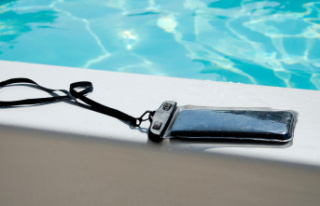Large areas are particularly suitable for kite flying. So it is hardly surprising why wide sandy beaches in particular are popular places to launch all kinds of flying objects. However, what looks child's play at first glance involves a lot of work: In addition to the right location, the wind direction, the position and the line of the kite also play an important role when taking off. Only through the perfect interaction of all components can a flying object glide through the air without crashing. You can find out exactly how this works and what else you need to know about kites here.
Tip 1: Children as young as three can fly a kite with the help of their parents. Best suited for the little dragon tamers are light models that can be stabilized in the wind with small fringes or an additional extension and glide through the air more easily or fall less quickly. Even former users should start with a kite like this one:
Tip 2: Most kites are single or double line. The name is based on the number of cords that hold the flying object in place. For beginners or children, single lines are better, for adults two lines are more exciting because they require more skill. Professionals even take on four-liners. If you are interested in a stunt kite with two lines, you will find it here.
Tip 3: Even if it's great fun to make a paper kite with your children, the chances of surviving outdoors are slim: the paper planes are quickly destroyed by the wind and possible falls. Cloth kites, on the other hand, can withstand much more. When buying, pay attention to the bridle cord - it distributes the pulling force over several points on the fabric or poles. Here's an example.
Tip 4: Light kites fly better when the wind is weak - other models only really take off in strong gusts of wind. The perfect wind force to fly a kite is between three and six. With a wind force of seven, you have to use a lot of energy to tame your flying object, with a wind force of eight, only real professionals can keep up, and with a wind force of nine, nobody should try again.
First things first: Never fly your kite near an electricity pylon or high-voltage power line – you are putting your life in danger here! Instead, choose a large, open space, such as a lawn or sandy beach. Once you have found a suitable location, the first step is initiated.
Step 1: Determine the wind direction. You can either rely on your own senses for this or you can use a special anemometer (such as this one here) that can determine the exact direction even in strong winds. Then position yourself so that you can feel the wind on your back and lay your kite down in front of you.
Step 2: Make sure the kite's line or two lines are facing up before taking a few steps backwards (without the flying object). While walking, carefully unwind the line from the spool without your kite already lifting off the ground. Once you have determined your position, you should stand with your legs apart for a firm hold.
Step 3: At first, pull the leash very lightly and then pull it hard again, but not jerkily. If your kite starts to lean, it can be caught by the wind and thrown into the air. During this process it is important that you keep the line under constant tension (if you have two lines, always switch left to right) so that your flying object does not sink.
Step 4: Conversely, this means you have to release the tension on the line to let the kite land. Just leave the line slack or approach your flying object if you want to make it sink. With a stunt kite, you can also steer it towards the ground using the lines.
This article contains so-called affiliate links. There is more information here.












